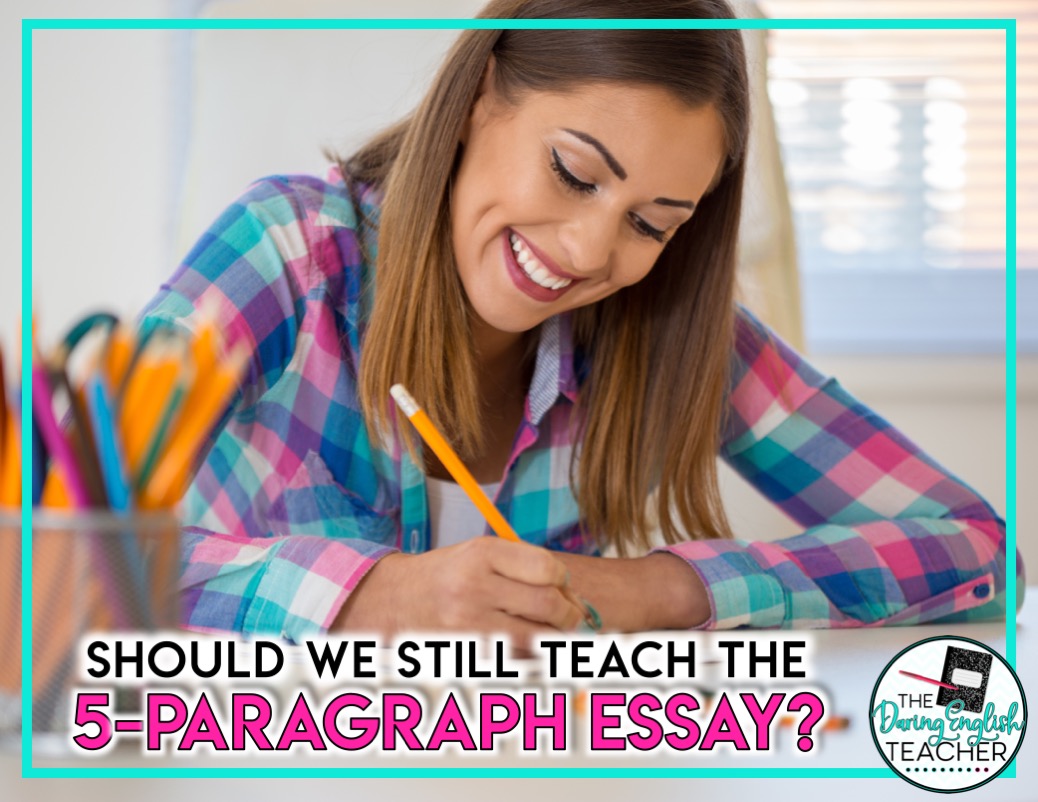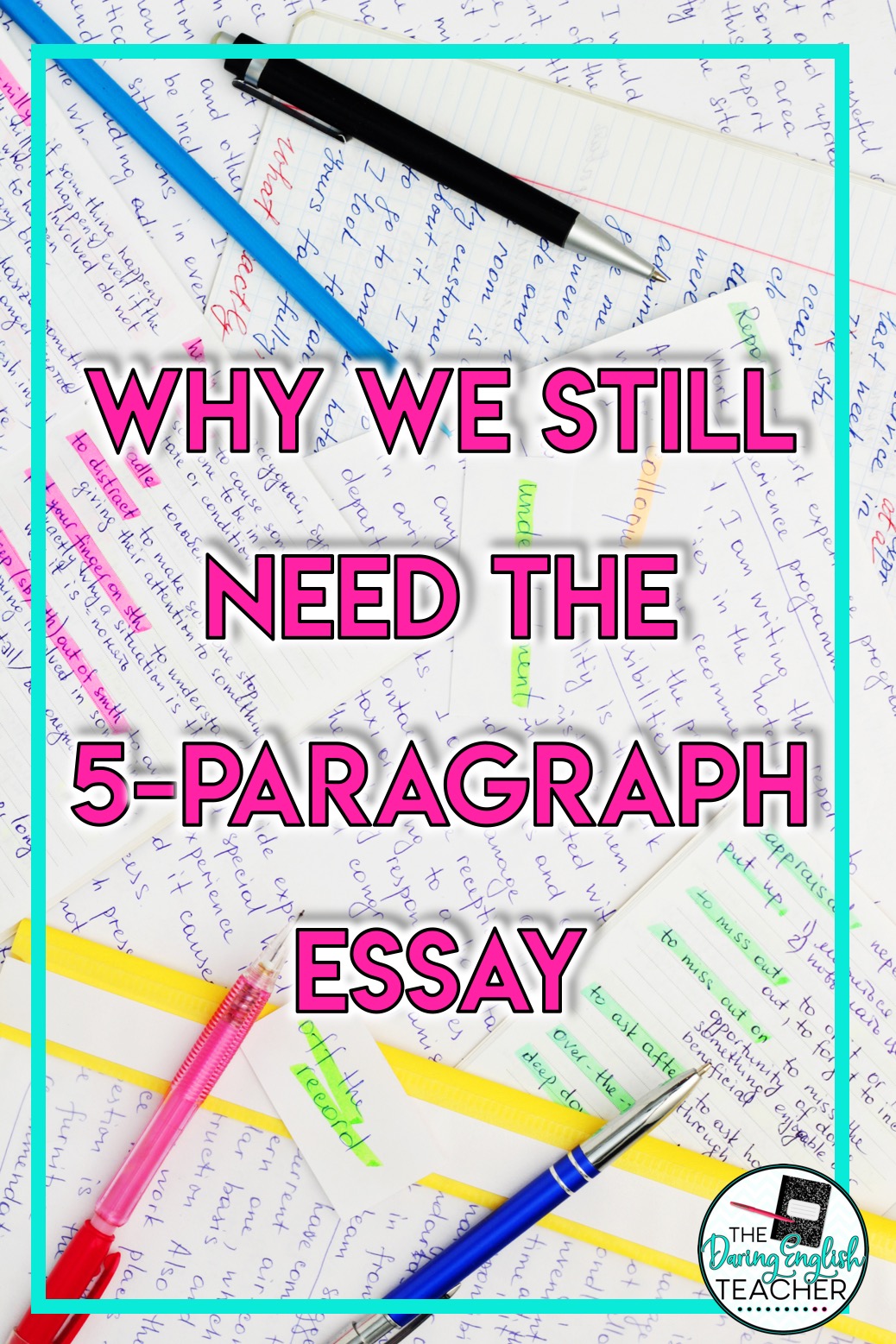Middle school ELAR teachers, high school English teachers, and even college professors debate the relevancy of the five-paragraph essay. Some teachers say it is time to retire the five-paragraph method for good, and others still see the necessity of the formulaic essay. And for various reasons, both opinions have strong arguments.
On the one hand, some educators believe the five-paragraph essay hinders students’ creativity with the numerous arbitrary rules and formulaic format it follows. On the other hand, some believe the five-paragraph essay is a necessary training tool to teach new writers where to start.
Personally, I still teach the five-paragraph essay in my high school classes. I want my students to master writing a thesis statement, properly embedding evidence, and writing commentary before moving on to more free-form writing structures.
Let’s look at the metaphor of a house to get a better understanding of why the five-paragraph essay is so critical. The essential components of a house are its foundation: its walls, roof, windows, and doors. Similarly, the crucial parts of an essay are its introduction, body paragraphs, and conclusion. With this metaphor in mind, the five-paragraph essay is an excellent starting tool for building the foundation for your students’ writing skills.
With the five-paragraph essay, you can teach students how to organize their essays properly: the simple five-step structure makes it easy for new writers to learn how to arrange their thoughts. Having a straightforward structure to follow also allows students to focus more on the content of the essay without worrying about what goes where. This strategy is especially beneficial for language learners, students with IEPs, and students who struggle to put down their thoughts in a cohesive manner.
The short, concise format of the five-paragraph essay can also teach students how to stay on topic and how to edit their essays. Since every sentence and paragraph has a specific structure and purpose, students must remain organized and on-task. By sticking to a structure, it can help students learn how to support their thesis without going off into tangents properly.
A five-paragraph essay is a great tool that can help students learn how to organize, edit, and peer edit their essays. This structured essay can be beneficial in situations where there is a time constraint, such as during a standardized test and in-class essays. Of course, not all essays are written within a 40-minute time frame, nor are they only five paragraphs long, especially after middle school.
As mentioned before in the house metaphor, the five-paragraph essay is only the skeleton of a house: the foundation, walls, roof, maybe a few windows and doors. One could live in this simple house and be content -like one could write this simple essay and be satisfied with the results. In all reality, however, no one is really content with a simple, empty dwelling, and no one is delighted with just a simple essay. So, where do we go once our students have a good grasp of the basics? Well, some of the benefits of the five-paragraph essay, as mentioned previously, can also be some of its most significant weaknesses, especially as your students’ writing skills advance.
The five-paragraph essay consists of three simple steps: the introduction, or what you are going to talk about in your essay; the body paragraphs, or the three main points in small, neat, and separate paragraphs; and the conclusion, or repeating what you said at the beginning and middle of your essay. The simple structure of the five-paragraph essay may be beneficial for first-time writers to learn how to organize their thoughts, but as their writing becomes more advanced, the structure of their essays should advance as well.
To get your students to break out of this restrictive structure, you should introduce them to different forms of writing. Students should have as much exposure to different types of writing as possible. They should read argument letters, expose articles, in-depth news reporting, scientific articles, and published academic writing.
One helpful piece of advice for students to understand as they branch away from the five-paragraph essay is that discussion topics don’t have to have three isolated points; topics and ideas naturally flow and connect. To get your students to break away from the five-paragraph essay’s robotic voice, you’ll want your students to write in a more natural and conversational tone. Assign your students writing that will allow them to use their voice and ideas. Assignments like writing in a journal, free-writes, and responding to published works will help your students learn how to create a more engaging and descriptive essay that will incorporate their unique voice and style. This type of writing won’t happen overnight. You might even notice that many of your students will struggle with the lack of structure when they first begin. That is okay and completely normal. The more free-writing they do, the more comfortable they will become writing outside of the structured essay.
Along with being able to use their own style and voice, students need to learn how to become more creative and innovative in their writing. While restriction can sometimes influence creativity, the constraints of the five-paragraph essay may be too stifling for students. I
To get students to think outside the box (or in our case outside the house), you need to incorporate writings to test their imaginative and critical-thinking limits: writing assignments that have no set correct or incorrect answer. Give your students creative writing assignments with minimal instructions; this instruction could be to write about a singular but broad topic. The only rule is their essay must include a single word, and allow your students to take the rest into their hands. Or even assign research papers with little to no rules and see where your students go with this. Their inquiry will drive the writing! You can always use this as a starting point for a first draft. Then, have your students go back and revise their papers the second time through.
So, with all of this in mind, is the five-paragraph essay still worth teaching? The answer is yes, and the answer is no.
The five-paragraph essay is a great starting point: it’s the foundation of learning to write. It’s the outer wall and the ceiling of our small and simple home. However, as students progress from middle school to high school, they will eventually need to move out of their simple home and create a home with more than just four walls and a ceiling.
Once students, especially students in upper grades, demonstrate mastery of the five-paragraph essay, it is time to move on. The best thing we as teachers can do to help them with this transition is to give them the tools and inspiration to expand their creativity, innovations, and individuality to make that home their own.
Resources for Teaching Writing
Essay Writing Unit: Mastering the Essay





